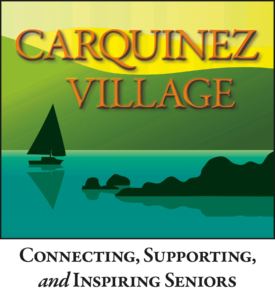By Judie Donaldson
I must admit that it’s sometimes hard for me to believe what I read, particularly when something seems so implausible or just doesn’t fit into any corner of my brain. This occurred to me this morning when I read something about ballroom dancing. Bear with me. I’ll explain what stymied me in a minute.
We all get endless messages about how important it is to exercise. Exercise for heart health. Exercise to prevent stiffness. Exercise for posture. Exercise to increase energy. Exercise for mental health, and more. I don’t know about you, but I get confused about which exercise has the best return on investment. Walking? Bicycling? Swimming? Lifting weights? Aerobics? Yoga? Tai Chi? We can’t do all of them. It’s probably wise to do something that we like. In addition, it’s smart to understand the benefits of each form of exercise.
Some Australian researchers recently conducted a study to identify the health benefits of dancing for seniors. It wasn’t the first study to show that dancing has positive effects on the body, produces feelings of happiness and well-being, and promotes a strong sense of community and friendship. These outcomes weren’t a surprise. But, there was another one that sure was a surprise to me. This is where ballroom dancing comes in.
The study investigated the impact of regular exercise, with an emphasis on the word regular, on reducing the risk of dementia. While it showed no significant reduction in activities such as bicycling, swimming, and team sports, one physical activity––ballroom dancing––showed an amazing 67 percent reduction in the risk of developing dementia. Pretty darn impressive, huh?
But, ballroom dancing, really? My brain shivered in cognitive dissonance! It seemed to be such a bizarre correlation, especially when research has shown that brain-stimulating activities such as reading, writing, and doing puzzles lowered the risk of dementia by only as much as 47 percent. However, from reading, I do know that one of the benefits of dance is that our brains are required to remember different moves and translate that understanding to activate our feet in different patterns. That complexity benefits us.
In fact, if you told me that a Zumba class showed a reduction in developing dementia, I could get on board with that much more easily. Ballroom dancing seems wimpy in comparison, doesn’t it? In my mind, I ignorantly equated speed and variance factors as ones that should be significant. But, what do I know? Really, nothing substantial in this area.
I do know enough about research to recommend that you hold on to your hat, so to speak, before you register for a ballroom dancing class. We need a lot more research to validate this Australian study. If its results were conclusive, Carquinez Villlage would be offering a course and you’d probably all be waiting in line to take it.
Reading and thinking about all of this brought up two related issues that I want to mention: exercise for those in wheel chairs or using walkers and exercise for those with balance problems. We have a lot of members who use walkers and a number who use canes for balance. I’ve been thinking about the fact that these folks are hampered when it comes to exercise . . . and certainly when it comes to dancing.
Limited mobility doesn’t mean that you can’t exercise, however. It’s critical not to quit. When you exercise, your body releases endorphins that energize your mood, relieve stress, boost your self-esteem, and trigger an overall sense of well-being. It’s important to remember that any type of exercise will offer some health benefits.
For wheelchair bound older adults and those using walkers, there are several exercises that you can perform to strengthen your abdominals. You can even do cardio and flexibility exercises, and chair yoga offers multiple benefits. It makes sense to begin under the guidance of a physical therapist, and start slowly, and make exercise a part of your daily routine. Those employing walkers can even learn some dance steps!
Loss of balance is a reality for many of us. I remember taking my mother to the doctor when she was 100. When I shared my concern that she was going to fall, her doctor looked me straight in the eye and said, “She will. Balance is the first sense to go. More people die of fall-related complications than anything else.” There is an excellent fall prevention program that I understand, after a hiatus, and will be offered again in the area. I’ll let you know when I learn its place and dates.
For those who are able and enjoy dancing, go for it! You can’t go wrong when you’re doing something you like. What’s your preference? Line dancing? Zumba? Ballroom? Latin, Mexican or Hawaiian? There are videos, home lessons, dance halls, and more. And don’t you dare say that you’re too old!







I really enjoyed your column this morning in the Benicia Herald. I wish you would have mentioned an alternative to dancing: Jazzercise. Benicia Jazzercisce has many classes everyday and being a Senior myself, it’s easy to modify the routines to fit your abilities and energy level. Plus you can do it without a partner! They also provide chairs for those that would prefer as well as a “Light” program. I’ve been going off and on since 1989 and enjoy the new routines every month. There are always lots of wonderful friendly folks getting a great workout.